
Main Products formed during a reaction of 1-methoxy naphthalene with hydroiodic acid are:
A.
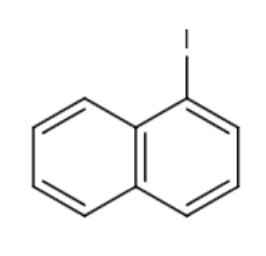 and CH3I
and CH3I
B.
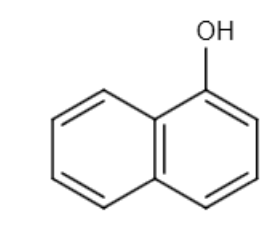 and CH3OH
and CH3OH
C.
 and CH3OH
and CH3OH
D.
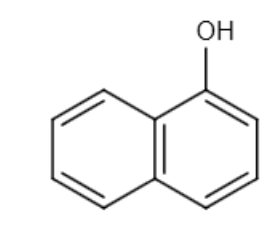 and CH3I
and CH3I
Answer
222k+ views
Hint: Here, in this question, 1-methoxy naphthalene is given. It reacts with hydroiodic acid. First of all, hydrogen ions react with 1-methoxy naphthalene followed by iodide ions.
Complete Step by Step Solution:
The structure of 1-methoxy naphthalene is as follows:
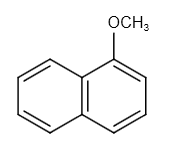
1-methoxy naphthalene reacts with hydrogen ion as follows:
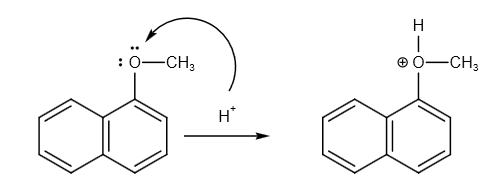
Hydrogen ions attack oxygen and bind with oxygen.
It will further react with iodine ion as follows:
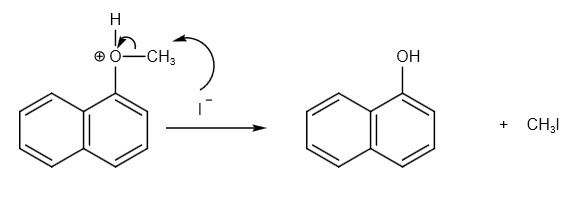
The carbon and oxygen bond breaks and iodine ions attack carbon to form methyl iodide.
Therefore, the correct answer is option D.
Additional Information:
The odour of naphthalene, a white, crystalline volatile substance, is often compared to that of mothballs. The substance slowly sublimes (changes from a solid to a gas) at room temperature, producing a vapour that is extremely combustible. The structure of naphthalene can be used to predict how soluble it is in water. A polyatomic hydrocarbon is naphthene. It is a hydrophobic molecule since it contains a lot of carbon atoms. The hydrophobic nature of this naphthalene makes it insoluble in water. The liquid nature of naphthalene is not thoroughly covered in this article. In 1-methoxy naphthalene, there is one hydrogen of naphthalene substituted by the methyl group.
Note: We must keep in mind that hydrogen iodide is a halide of hydrogen and a diatomic molecule. Aqueous solutions of HI are also referred to as hydroiodic acid, a solid acid. Hydroiodic acid and hydrogen iodide, however, are different in that the former is a gas under normal circumstances while the latter is an aqueous gas solution.
Complete Step by Step Solution:
The structure of 1-methoxy naphthalene is as follows:

1-methoxy naphthalene reacts with hydrogen ion as follows:

Hydrogen ions attack oxygen and bind with oxygen.
It will further react with iodine ion as follows:

The carbon and oxygen bond breaks and iodine ions attack carbon to form methyl iodide.
Therefore, the correct answer is option D.
Additional Information:
The odour of naphthalene, a white, crystalline volatile substance, is often compared to that of mothballs. The substance slowly sublimes (changes from a solid to a gas) at room temperature, producing a vapour that is extremely combustible. The structure of naphthalene can be used to predict how soluble it is in water. A polyatomic hydrocarbon is naphthene. It is a hydrophobic molecule since it contains a lot of carbon atoms. The hydrophobic nature of this naphthalene makes it insoluble in water. The liquid nature of naphthalene is not thoroughly covered in this article. In 1-methoxy naphthalene, there is one hydrogen of naphthalene substituted by the methyl group.
Note: We must keep in mind that hydrogen iodide is a halide of hydrogen and a diatomic molecule. Aqueous solutions of HI are also referred to as hydroiodic acid, a solid acid. Hydroiodic acid and hydrogen iodide, however, are different in that the former is a gas under normal circumstances while the latter is an aqueous gas solution.
Recently Updated Pages
JEE Main 2022 (July 26th Shift 1) Physics Question Paper with Answer Key

JEE Main 2022 (June 26th Shift 2) Chemistry Question Paper with Answer Key

Apparent Frequency Explained: Formula, Uses & Examples

JEE Main 2023 (January 30th Shift 2) Chemistry Question Paper with Answer Key

Displacement Current and Maxwell’s Equations Explained

JEE Main 2022 (June 29th Shift 1) Maths Question Paper with Answer Key

Trending doubts
JEE Main 2026: Application Form Open, Exam Dates, Syllabus, Eligibility & Question Papers

Derivation of Equation of Trajectory Explained for Students

Hybridisation in Chemistry – Concept, Types & Applications

Understanding the Angle of Deviation in a Prism

How to Convert a Galvanometer into an Ammeter or Voltmeter

Degree of Dissociation: Meaning, Formula, Calculation & Uses

Other Pages
NCERT Solutions For Class 11 Chemistry Chapter 7 Redox Reaction

JEE Advanced Marks vs Ranks 2025: Understanding Category-wise Qualifying Marks and Previous Year Cut-offs

Hydrocarbons Class 11 Chemistry Chapter 9 CBSE Notes - 2025-26

Thermodynamics Class 11 Chemistry Chapter 5 CBSE Notes - 2025-26

NCERT Solutions ForClass 11 Chemistry Chapter Chapter 5 Thermodynamics

Equilibrium Class 11 Chemistry Chapter 6 CBSE Notes - 2025-26




